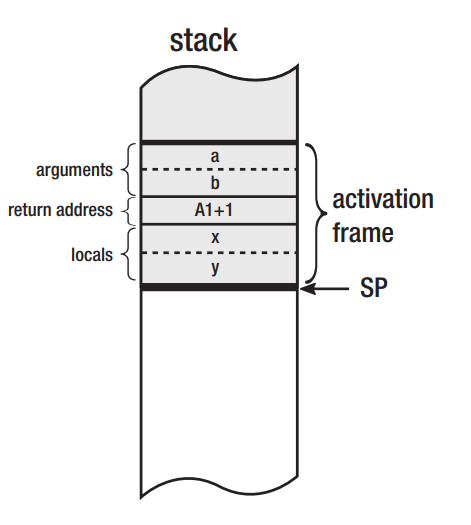C# Garbage Collector - Part 2
In this article, we will explore the differences between Stack and Heap in memory, particularly in the context of C#.
In simple terms, when you create a new variable, depending on its type, the “value” of your variable will be stored in either the Stack or the Heap.
Stack
The Stack is a data structure where data is stored linearly and operates on a LIFO (Last In, First Out) basis, meaning the last data item put in the Stack is the first one that can be accessed. When we put data in the Stack, we Push it, and when we read the last data due to its linear structure, we Pop it.

This data structure is kept in memory, and many of the variables we create in our code are stored in this type of memory structure.
A variable’s value is stored in the Stack if it is of value type. In C#, generally structs and enums are value types and are stored in the Stack by default. All value types in C# implicitly inherit from System.ValueType.
Below are the default value types defined in C# known as Simple Types:
| Type | Represents |
|---|---|
| bool | Boolean value |
| integer | 8-bit unsigned integer |
| char | 16-bit Unicode character |
| decimal | 128-bit precise decimal values with 28-29 significant digits |
| double | 64-bit double-precision floating point type |
| float | 32-bit single-precision floating point type |
| int | 32-bit signed integer type |
| long | 64-bit signed integer type |
| sbyte | 8-bit signed integer type |
| short | 16-bit signed integer type |
| uint | 32-bit unsigned integer type |
| ulong | 64-bit unsigned integer type |
| ushort | 16-bit unsigned integer type |
If you check the source of any of these types, like Int32, in Microsoft’s CoreFX repository, you will find that all these types are defined as Structs, which by default, are stored in the Stack.
The lifetime of variables stored in the Stack is limited to the end of the execution of a method. This means that once a method execution is completed, all the variables used in that method are automatically removed from the Stack. The type and size of values for variables stored in the Stack are determined during Compile-Time.
Local variables, method input parameters, and a method’s return value are examples of items whose values are stored in the Stack:
public static int Add(int number1, int number2)
{
// number1 is on the stack (function parameter)
// number2 is on the stack (function parameter)
int sum = number1 + number2;
// sum is on the stack (local variable)
return sum;
}
In C#, during compile-time, the code is translated into IL (Intermediate Language), also known as MSIL (Microsoft Intermediate Language) or CIL (Common Intermediate Language). The structure of this language is stack-based, and understanding it helps us better comprehend the concept of the Stack.
IL is the language understood and executed by CLR (Common Language Runtime), which is Microsoft’s runtime. The source for Microsoft’s runtime, formerly known as CoreCLR and now simply as Runtime, is open-source and available here.
Using programs like dotPeek, dnSpy, ILDASM, or online tools like Sharplab, you can view the IL code of your program’s DLLs. These tools are similar, with dnSpy having the advantage of IL code debugging capabilities, and ILDASM is accessible without additional software installation through Visual Studio:
C:\Program Files (x86)\Microsoft SDKs\Windows\{version}\Bin\ildasm.exe
As mentioned earlier, the lifespan of the Stack is limited to the duration of a method. The Stack created when calling a method, which includes the method’s inputs, local variables, and return address, is known as a Stack Frame or Activation Frame.

If we call the above Add method with parameters 2 and 5, the resulting IL output will be as follows (parts of the output have been omitted for simplicity):
.method private hidebysig static int32 Add(int32 number1, int32 number2) cil managed
{
.locals init (int32 V_0, int32 V_1)
IL_0001: ldarg.0 // Stack is: [2]
IL_0002: ldarg.1 // Stack is: [2, 5]
IL_0003: add // Stack is: [7]
IL_0004: stloc.0 // Stack is: [] and V_0's value is: 7
IL_0005: ldloc.0 // Stack is: [7]
IL_0006: stloc.1 // Stack is: [] and V_1's value is: 7
IL_0009: ldloc.1 // Stack is: [7]
IL_000a: ret // Return [7]
}
You can find a list of instructions used in CIL here.
Let’s analyze the output line by line:
1. In IL, you can store values resulting from computations or other methods in local variables, but first you have to declare them at the beginning.
- Using
locals(which stands for local variables), you can define the necessary variables for the lifetime of the method. Naming these variables (not mandatory, likeV_0andV_1) is used for readability.
2. The keyword ldarg (Load Argument) is used to load the method’s input parameter into the Stack.
ldarg.0means loading the first input parameter into the Stack, resulting in a Stack Frame with one member, the value 2.ldarg.1means loading the second input parameter into the Stack, resulting in a Stack Frame with two members, values 2 and 5.
3. Using the keyword add, the values in the Stack are added together, resulting in a Stack Frame with one member, value 7.
4. The keyword stloc (Store Local) is used to store the last member in the Stack into the specified local variable.
stloc.0means storing the last value in the Stack, number 7, into variable 0, i.e.,V_0.
5. The keyword ldloc (Load Local) is used to load a stored local variable into the Stack.
ldloc.0means loading the stored value of local variable 0,V_0, into the Stack.
6. Finally, the value 7, stored in variable 1 or V_1, is again stored, loaded with ldloc.1, and returned with the ret instruction.
* Note: If you have examined the codes carefully, you might wonder why there is a need to create an additional variable and store the result in it before returning it in step 6. In C#, your codes are optimized during Release build and JIT-compilation, and one of these optimization steps includes removing these extra variables, so there’s no need to worry.
* Note: By now, you might understand why a StackOverflowException occurs. Stack space is limited. This space is 1 megabyte in 32-bit systems and 4 megabytes in 64-bit systems. If the volume of variables pushed onto the Stack exceeds these limits, or if a method continuously calls itself (recursion) without ever exiting, you will encounter a StackOverflowException.
Heap

Contrary to the orderly and sequential structure of the Stack, we have the Heap. The Heap is a part of memory that doesn’t have a specific structure, order, or layout.
Unlike the Stack, which is limited to a method, the Heap is global and accessible anywhere in the program. Memory allocation in the Heap is dynamic, and any data type can be stored at any time.
Strings are an example of types stored in the Heap. It’s important to note that when we say “stored,” we refer to the value of a variable.
When we create a string variable, its value is stored in the Heap, and the memory address of that variable on the Heap is stored in the Stack:
public static void SayHi()
{
string name = "Moien";
}
In this example, since string is a class, its value is stored in the heap, and the address of that memory segment is placed on the Stack:
.method private hidebysig static void SayHi() cil managed
{
.locals init (string V_0)
IL_0001: ldstr "Moien" // Stack is: [memory-address of string in heap]
IL_0006: stloc.0
IL_0007: ret
}
Variables whose values are stored in the Heap are known as reference types.
*Note: In this example, a variable named name is created but not used. During JIT compilation, due to the optimizations at the runtime level, this method will be deemed redundant and ignored.

Boxing
The process of converting a value type, such as int, which is typically stored in the Stack, into an object stored in the Heap, is known as Boxing. This action causes allocation on the memory, which is quite costly.
By performing boxing, we can store a number, contrary to its usual practice, on the heap:
public static void Boxing()
{
const int number = 5;
object boxedNumber = number; // implicit boxing using implicit cast
object boxedNumber = (object)number; // explicit boxing using direct cast
}
Initially, the number 5 was stored on the Stack, but by boxing it, i.e., placing its value inside an object, the value is transferred from the stack to the heap, causing allocation:
.method public hidebysig static void Boxing() cil managed
{
.locals init (object V_0)
IL_0001: ldc.i4.5 // Stack is: [5]
IL_0002: box [System.Runtime]System.Int32 // Stack is: [memory-address of 5 in heap]
IL_0007: stloc.0
IL_0008: ret
}
Unboxing
The reverse of this process, i.e., converting a reference type to a value type, is known as Unboxing:
public static void Unboxing()
{
object boxedNumber = 5;
int number = (int)boxedNumber;
}
The result of which will be as follows:
.method public hidebysig static void Unboxing() cil managed
{
.locals init (object V_0, int32 V_1)
IL_0001: ldc.i4.5 // Stack is: [5]
IL_0002: box [System.Runtime]System.Int32 // Stack is: [memory-address of 5 in heap]
IL_0007: stloc.0 // Stack is: []
IL_0008: ldloc.0 // Stack is: [memory-address of 5 in heap]
IL_0009: unbox.any [System.Runtime]System.Int32 // Stack is: [5]
IL_000e: stloc.1 // Stack is: []
IL_000f: ret
}
Recent efforts by dotnet team have led to a remarkable improvement in performance in both .NET Core and ASP.NET Core. A key reason behind this enhanced performance is the significant reduction of memory allocations in the .NET codebase.
Unlike the stack, where the lifespan of variables ends at the conclusion of a method, variables allocated in the heap do not follow this pattern. If these variables are not manually deleted, they remain in memory for the duration of the program’s execution. This is where the Garbage Collector in .NET comes into play.
